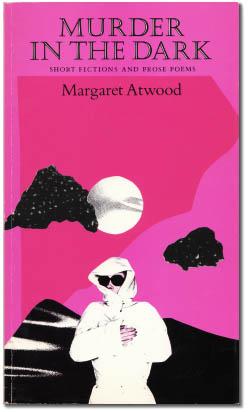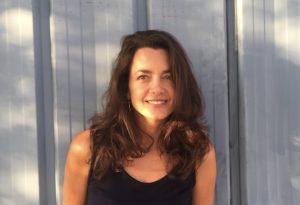
SmokeLong‘s “Flash, Back” series asks writers to discuss flash fiction that may be obscure or printed before the term “flash fiction” became popular, and tell us how these older or not widely-known works are meaningful. In this edition, Jeanne Jones discusses Margaret Atwood’s “Happy Endings,” and how it gave her permission to break the rules of traditional storytelling. Submit your own “Flash, Back” or other flash-related essays on our Submittable page!
By Jeanne Jones
When I was in college, I knew I wanted to write, but I thought I was going to be a poet. If you had asked me then, I would have told you I was a poet. I wrote horrible lines in poems with ridiculous titles and I thought I was being mysterious and profound, until my poetry professor finally said, “coughing up ashes again? I think that’s a bit much.”
I also remember reading poems in this class from a book called 45 Contemporary Poems. One of them was Margaret Atwood’s “Variations on the Word Sleep,” which ends with the lines “I would like to be the air/that inhabits you for a moment/only. I would like to be that unnoticed/& that necessary.”
Once I read those lines, I never forgot them. They were everything I was trying to write and failing at, but more important, they showed me just how badly I was failing at it. I couldn’t imagine anyone ever reading that poem and saying, “that unnoticed & that necessary? Don’t you think that’s a bit much?” No. You read that poem and you say: “I’m going to read every Margaret Atwood poem I can find.” If I couldn’t write great poetry, I could certainly be good at reading it.
These were pre-Google days, when making good on a statement like that didn’t mean you had to sit down in font of your computer for the next 17 hours. You just had to make a good faith effort at a library or a book store. My good faith effort turned up Murder in the Dark, Atwood’s 1983 collection of short stories, essays, and prose poems. And nestled in that thin, 110 page collection of 27 pieces was a tiny story called “Happy Endings.”
“Happy Endings,” is not really a story. It’s more of a comment on stories. Or a manual for story writing. Or a comment on life. Or maybe it’s six different stories. But what I loved most about it was its strangeness. It is definitely weird. And back then, when I was learning about story analysis, plot structure, and Freytag’s pyramid in my literature classes, it seemed like a gift to me. A whisper of possibility that I could hear underneath all the different versions of “isn’t that a bit much?”
The story starts with a sentence that is about as basic as you can get in storytelling: “John and Mary meet.” Then Atwood asks us, “What happens next? If you want a happy ending, try A.” So you go to A and you get a basic happy (and boring) plot line, with many cliches and no conflict: John and Mary fall in love, get married, buy a house, have children, who “turn out well,” and eventually they retire and have rewarding hobbies. We are told three times in the space of one paragraph that John and Mary’s life is “stimulating and challenging.” Atwood ends section A with, “This is the end of the story.”
But then there is section B, where we move into conflict. John doesn’t fall in love with Mary and Mary ends up doing things no self-respecting woman wants to see herself doing, eventually killing herself. And then section C, where John is an older man falling for Mary, who is only twenty-two. Section C adds more complications, and two more people—Madge and Fred. Eventually we find out that John buys a handgun. And here is where Atwood gives us an aside, saying, “this is the thin part of the plot, but it can be dealt with later.”
Now this was something new to me. A story that comments on itself? Are you allowed to do that?
With every section of this story I discovered a new possibility I thought writers were not allowed to do. In section D, the couple is getting along “exceptionally well,” until a giant tidal wave destroys everything, killing thousands of people. In section E, Atwood tells us we can substitute items in the story. “If you like, it can be ‘Madge,’ ‘cancer,’ ‘guilty and confused,’ and ‘bird-watching.’” In section F, she exhorts us to try to turn it into a story of political intrigue, “and see how far that gets you.” And finally, in the end, she warns us not to be deluded by the deliberately fake endings we may have read in other stories. She reminds us that in stories, as in life, the only authentic ending is death. And she repeats it three times to make sure we get it: “John and Mary die. John and Mary die. John and Mary die.”
This story made fun of everything I learned about story making. And it was hilarious. (Atwood says, about trying to turn the story into one of political espionage, “Remember, this is Canada.”) Here was the same woman who had written those meaningful lines about love and longing that I would carry with me for the rest of my life now telling me that fiction writing is basically “one thing after another, a what and a what and a what” and showing me that it doesn’t have to be that way. You can try something new if you like.
I carried on with my tortured poetry for another few years before I decided to write fiction instead. And when I did, I had this lesson as my fortress, always with me as a sort of encouragement. The lesson, as I read it, is there really is no wrong way to do it, and if you’re having fun while you’re doing it, it’s even better.
When one of my pieces was finally accepted for publication, the editor told me it landed “firmly on the lap of experimental fiction” they were looking for. I had thought, at the time, that I had written a narrative with a traditional story arc, but if they were publishing it, they could sit it on whatever lap they wanted. I have since realized that just knowing that “Happy Endings” exists has allowed me the freedom to make up whatever structure feels right for my story.
I recently read that Atwood compared writing “Happy Endings” to “scribbling anonymously on a wall with no one looking.” She believed she had discovered a new mutant literary form and that it was “disappointing to learn that other people had a name for such aberrations (metafiction), and had already made up rules.” I like the thought of Atwood creating graffiti and ignoring rules she didn’t even know were there. It gives me encouragement to do the same. “Happy Endings” was a new form to me when I came across it, and it still reads like a revelation every time I read it.
 Jeanne Jones is a graduate of the Writing Program at Johns Hopkins University. A writing teacher in the Washington metropolitan area, her work has appeared or soon will in Abundant Grace: Fiction by D.C. Area Women and online at American Short Fiction, Barrelhouse, and the EEEL, among other publications. She lives in Hyattsville, Maryland, with her husband and two children.
Jeanne Jones is a graduate of the Writing Program at Johns Hopkins University. A writing teacher in the Washington metropolitan area, her work has appeared or soon will in Abundant Grace: Fiction by D.C. Area Women and online at American Short Fiction, Barrelhouse, and the EEEL, among other publications. She lives in Hyattsville, Maryland, with her husband and two children.

 The SmokeLong Grand Micro Contest (The Mikey) is now an annual competition celebrating and compensating the best micro fiction and nonfiction online.
The SmokeLong Grand Micro Contest (The Mikey) is now an annual competition celebrating and compensating the best micro fiction and nonfiction online.